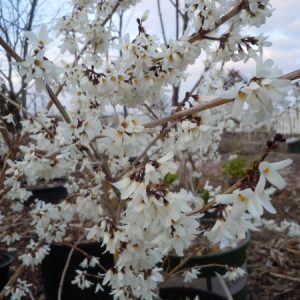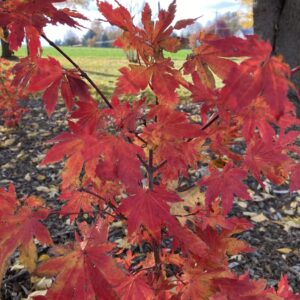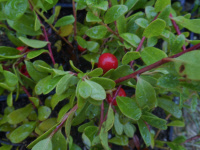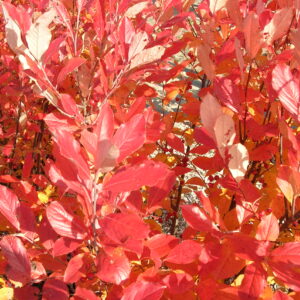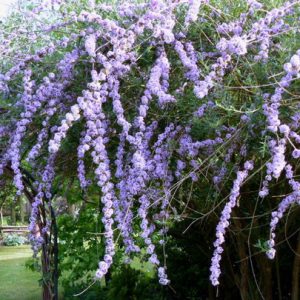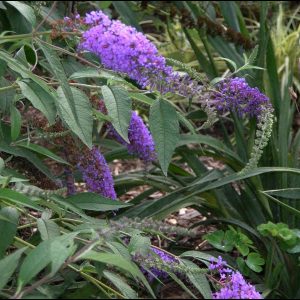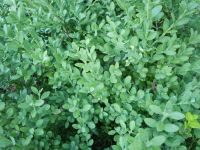Woody Ornamentals
Showing 1–8 of 48 results
-
Abeliophyllum distichum White forsythia, Korean Abelea-leaf Z. 5-8
Swan white, open cone-like blooms, each petal splitting then terminating with a notch, cascade along stems in very early spring, almond fragrance.
Swan white, open cone-like blooms, each petal splitting then terminating with a notch, cascade along stems in very early spring, almond fragrance.
Size: 3-5’ x 3-4’
Care: sun to part shade in moist to moist well-drained soil. Flowers bloom on old wood so prune right after flowering.
Native: central Korea, where it is now nearly extinct. This is the sole species in this genus.
Awards: Royal Horticultural Society Award of Merit in 1937 and RHS First Class Certificate in 1944.1st collected by Japanese botanist Takenoshin Nakai (1882-1952) before 1919. Nakai, professor, author, scholar and official botanist for Korea in 1910 after Japan annexed Korea following the Sino-Japanese and Russo-Japanese wars. There he explored the botanically unknown mountains and forests and introduced its plants to the world through his international contacts and his authorship of Flora Koreana. Abeliophyllum means leaves like an Abelia, a different shrub. In America’s Arnold Arboretum by 1924.
**LISTED AS OUT OF STOCK BECAUSE WE DO NOT SHIP THIS ITEM. IT IS AVAILABLE FOR PURCHASE AT OUR RETAIL LOCATION.
-
Acer pseudosieboldianum Z 4-8 Korean maple
Small tree or large shrub. Medium to dark green leaves (to 5” long) with 9 doubly serrate lobes, Purple flowers bloom in corymbs in spring. Excellent shades of amber, carrot and garnet in fall. Appears like Japanese maples or Fullmoon maple but hardier.
Small tree or large shrub. Medium to dark green leaves (to 5” long) with 9 doubly serrate lobes, Purple flowers bloom in corymbs in spring. Excellent shades of amber, carrot and garnet in fall. Appears like Japanese maples or Fullmoon maple but hardier.
Size: 15-25’ x 15-25’
Care: sun to part shade in moist well-drained soil. Site out of wind.
Native: Eastern AsiaPseudo means false referring to the similarity of this to Acer sieboldianum. Korean maple is sometimes commonly called purplebloom maple in reference to its flower color.
First described in 1886 in German journal Botanische Jahrbücher für Systematik, Pflanzengeschichte und Pflanzengeographie 7(2): 199–200.**LISTED AS OUT OF STOCK BECAUSE WE DO NOT SHIP THIS ITEM. IT IS AVAILABLE FOR PURCHASE AT OUR RETAIL LOCATION.
-
Amorpha canescens Lead plant Z 2-9
Arching violet spikes flower in mid-summer top pinnately compound, grey-green leaves.
Arching violet spikes flower in mid-summer top pinnately compound, grey-green leaves. Liberty Hyde Bailey (1933): “Handsome free-flowering shrub of dense habit, well adapted for rockeries and borders …”
ONLY AVAILABLE TO SHIP IN EARLY SPRING, WHILE DORMANT. (USUALLY APRIL/MAY)
Size: 2-4’ x 2-3’
Care: sun in well-drained to moist well-drained soil, drought tolerant.
Native: Broad swath of central No. America from Canada to TX. Wisconsin native. Common shrub in Great Plains’ tall-grass prairies and seasonally wet soil.
Wildlife Value: Honeybees and butterflies; especially Whitney's Underwing, relish its nectar. Supports over 50 bee species.
Awards: Great Plants for Great PlainsAmorpha means “deformed” in Greek and “becoming grey” in Latin. Called Lead plant due to old belief that plant grew in soil containing lead. 1st described in published work in 1813. Used medicinally by numerous Native Americans to kill pinworms, remedy eczema, stomach aches, neuralgia, rheumatism and cuts. Steeped leaves made tea for Oglala. Oglala mixed its dried leaves with buffalo fat for smoking. Winnebago powdered the leaves, added water and applied it to skin to remedy scalds. They also ate the roots. Sioux: A tea made from leaves drank as a beverage, treated flu related congestion and as a bath for eczema. Dried leaves part of mixture for smoking. Pre-bison hunt ceremony used stems.
-
Arctostaphylos uva-ursi Bearberry, Bear’s grape, Kinnikinnick Z 2-7
In spring fragrant, pinkish-white bell-shaped flowers, evergreen, glossy foliage and Marlboro red berries in fall.
OUT OF STOCK
“Dwarf ornamental shrub, ornamental in foliage, flowers and berry.” Rand 1866. In spring fragrant, pinkish-white bell-shaped flowers, evergreen, glossy foliage and Marlboro red berries in fall. Great for cascading over edge of wall or groundcover.
Size: 4” x 20” forms dense groundcover over time. Stems root to spread.
Care: sun to part shade in moist well-drained to dry, acidic soil. Needs watering until established. Best grown with protection from wind.
Native: No. America, Wisconsin native
Wildlife Value: Host for several butterfly species including Hoary Elfin, Brown Elfin and Freija Fritillary.
Awards: Cary Award Distinctive Plants for New EnglandKinnikinnick is Algonquin meaning “mixture.” Used as an ingredient in Native American smoke mixtures. For centuries leaves used to make medicinal tea as a tonic and diuretic in many parts of the world. Cheyenne drank the tea to cure back sprains. Some Native Americans used it to cure venereal disease, others to cure pimples and itching, peeling skin. Both Indians and colonists mixed leaves with tobacco for smoking. Collected by Meriwether Lewis on the Expedition.
-
Aronia arbutifolia Red chokeberry syn. Photinia pyrifolia SHRUB Z 5-9
Corymbs of white in spring, gorgeous red foliage in fall compliments the red berries that persist into winter
OUT OF STOCK
Corymbs of white in spring, gorgeous red foliage in fall compliments the red berries that persist into winter
Size: 6-8' X 3-5'
Care: sun to part shade in moist to well-drained acidic soil. Prune annually in late winter to promote vigorous growth.
Native: Nova Scotia west to Ontario south to TX & FL
Wildlife Value: Berries overwinter-food for Thrush, Oriole, and Cedar waxwings.Showy shrub collected by André Michaux around 1800. Aronia comes from aria a subgenus of a related plant, Sorbus. Arbutifolia means “leaves like the Arbutus.” William Robinson, father of mixed borders, reported: “Massed, charming both in flower and fine color of leaf in autumn.”
**LISTED AS OUT OF STOCK BECAUSE WE DO NOT SHIP THIS ITEM. IT IS AVAILABLE FOR PURCHASE AT OUR RETAIL LOCATION.
-
Buddleja alternifolia ‘Argentea’ Silver fountain butterfly bush Z 5-9
Graceful, arching, weeping silvery foliage with cascading lavender flowers
OUT OF STOCK
Graceful, arching silvery foliage and, in early summer, lavender, fragrant flowers cascade all along the stems. A cloud of purple.
Size: 8-10” x 8-10” fast growing
Care: sun to part shade in moist well-drained to well-drained soil. Prune just after blooms finish if you wish.
Native: China & Japan
Wildlife Value: attracts butterflies
Awards: 1998 Plant Select ® awardBuddleja named to honor botanist Reverend Adam Buddle, Vicar of Farmbridge in Essex, (1662-1715) Alternifolia means the leaves alternate on the stem. The 1st Buddleja alternifolia was found by plant hunter and horticulture author Reginald Farrer (1880-1920) in western China in 1914. The cultivar’s name ‘Argentea’ means silver due to the tiny hairs on the foliage giving the plant a silvery appearance. ‘Argentea’ selected at Hillier Nursery in England in 1939.
-
Buddleja davidii Butterfly bush, Summer lilac, do ye zui cao in China Z 5-9
Fragrant, large, lilac to purple arching spikes from mid-summer through fall
Fragrant, large, lilac to purple arching spikes from mid-summer through fall
Can not ship to: Delaware, Maryland, North Carolina, Oregon, Pennsylvania, Tennessee and Washington
Size: 6' x 4'
Care: Sun in well-drained soil.
Native: Sichuan & Hubei provinces, China
Wildlife Value: flowers very fragrant, attracts many butterflies, excellent cut flower
Awards: Royal Horticultural Society Award of Garden Merit.Buddleja named to honor Reverend Adam Buddle, Vicar of Farmbridge in Essex and botanist. (1662-1715) Davidii honors Fr. Armand David a French missionary who noticed it. Introduced to gardens by another French missionary Jean Soulie (1858-1905). Soulie made dangerous expeditions to the Tibetan border of China and ultimately lost his life when he was tortured and shot in 1905. This species 1st sent to the West (Kew Gardens) by Dr. Ernest Henry who found it near Ichang in 1887. Irishman Dr. Henry worked as a customs officer in Shanghai and an assistant physician in Ichang.
-
Buxus microphylla var. koreana syn. B. sinensis var. insularis
SHRUB Boxwood
OUT OF STOCK
SHRUB Boxwood
Size: 24” x 30”
Care: Light to Part shade in well drained, alkaline soil. Do not crowd with other plants, roots prefer no competition. Fertilize regularly for dramatic growth. Prune in early spring. Unlike English boxwood this can be pruned back hard. One of a few shade tolerant evergreens and deer resistant too. Also the most hardy Boxwood.Introduced from Asia to American and European gardens around 1900 by Ernest Henry “Chinese” Wilson (1876-1930) who scoured Asia for plants.

